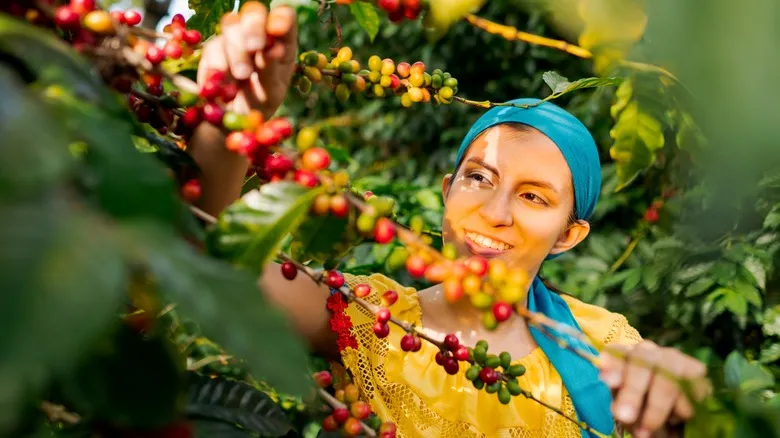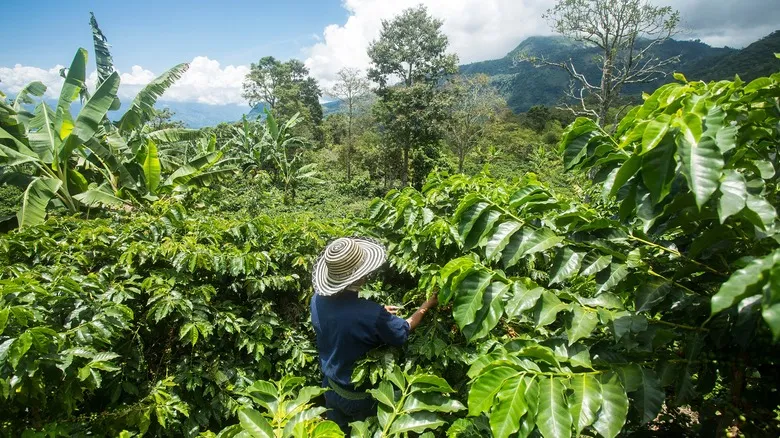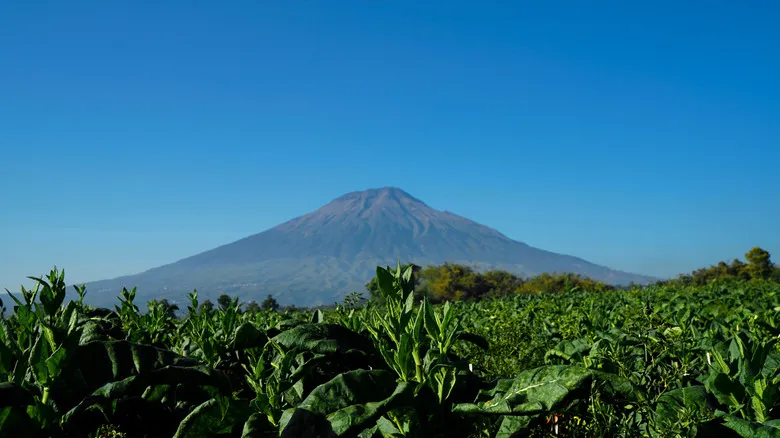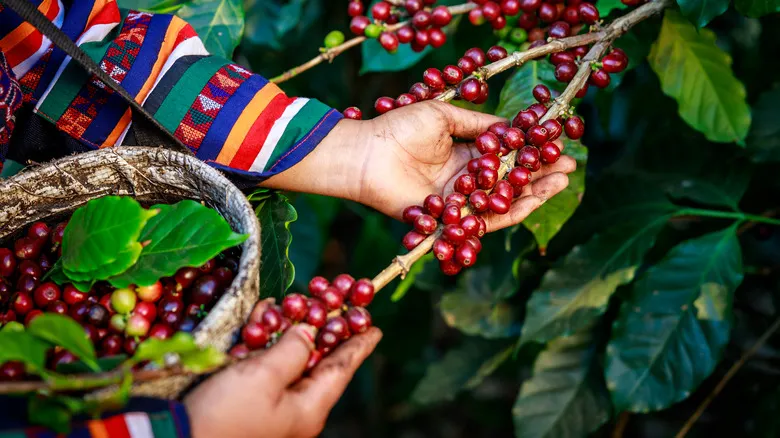Brazilian coffee is balanced and mild

Brazil is currently the world's leading coffee producer, with an output of approximately 54 million 60-kilogram bags (around 7.1 billion pounds) in 2023, according to Statista. The majority of coffee cultivated in Brazil is arabica, although some regions, such as Espírito Santo and Rondônia, also produce canephora, commonly known as robusta. The flavor profile of Brazilian coffee can vary significantly depending on the region it comes from. However, Brazilian coffee is generally known for its low acidity.
In contrast to other South American coffee-producing nations that cultivate their beans at elevations exceeding 5,000 feet, Brazilian coffee farms are typically located at lower altitudes, around 3,600 feet. This lower elevation results in beans with reduced acidity, as coffee plants grown at higher altitudes mature more slowly, allowing for greater flavor development. Consequently, Brazilian coffee is celebrated for its smooth taste, often featuring distinct nutty undertones, along with subtle hints of spices and chocolate.
In addition to its affordability, this well-balanced flavor profile contributes to the popularity of Brazilian coffee among consumers and major brands like McDonald's and Panera. It offers a brew that appeals to everyone, whether they are coffee aficionados or simply seeking a robust cup to kickstart their morning.
Vietnamese coffee is notoriously bold

Following Brazil, Vietnam ranks second, with Statista reporting approximately 26.3 million bags (around 3.5 billion pounds) of coffee shipped in 2023. Unlike Brazil, which mainly cultivates arabica beans, Vietnam's coffee production is almost exclusively robusta. This variety is known for its bold flavor profile, so you can anticipate a strong initial taste when sipping Vietnamese coffee, especially when considering the impact of terroir.
The coffee is highly aromatic, yet it presents a distinct bitterness, enhanced by tasting notes such as chocolate and nuttiness that emphasize its robust character. However, don't expect any floral notes to emerge. This intensity is why many Vietnamese prefer their coffee with sweetened condensed milk ("cà phê s?a") instead of traditional cream, as it helps to soften the brew's strong flavors. It can also be enjoyed black, referred to simply as black coffee or "cà phê ?en."
Most coffee plantations in Vietnam are located in the Central Highlands at elevations exceeding 600 feet. While robusta beans do not require high altitudes like arabica, many Vietnamese plantations are situated at these heights to develop more complex flavor profiles in the beans.
Colombian coffee is intensely acidic, but also fruity

Colombia ranks third in coffee production, generating around 11.5 million bags (approximately 1.5 billion pounds) of coffee in the 2023/2024 market year, according to the U.S. Department of Agriculture. The country benefits from two key factors for coffee cultivation: its proximity to the equator, which provides consistent warm sunshine year-round with minimal weather fluctuations, and the Andes mountain range that traverses much of the nation. Coffee plantations can be situated at altitudes ranging from 3,000 to 7,000 feet in the Andes. This high elevation is particularly advantageous for cultivating the esteemed arabica variety, and Colombia has effectively capitalized on this opportunity, as evidenced by the esteemed reputation of its coffees.
Now, let's explore how altitude influences the flavor of Colombian coffee. The most sought-after coffees, cultivated in high-altitude regions like Huila or Nariño in the south, exhibit a pronounced acidity reminiscent of citrus due to the elevation. Alongside the initial tang, you'll notice a fruity sweetness in the brew, complemented by a subtle nuttiness in the aftertaste. In contrast, beans from lower regions, such as the northern departments of Guajira and Magdalena, are grown at elevations between 3,000 and 5,200 feet, resulting in a milder acidity. These coffees tend to showcase nutty or herbal notes and are generally less vibrant (i.e., less acidic).
Indonesian coffee is earthy and deep

Although the country produced approximately 9.7 million bags in the 2023/2024 market year, ranking fourth overall, Indonesian coffee remains highly esteemed among aficionados worldwide. The secret lies on a small island in Indonesia: Java. This name has nearly become synonymous with coffee itself, thanks to Java's exceptional terroir.
The island benefits from year-round warm sunshine and abundant rainfall due to its monsoon seasons, but most importantly, it is surrounded by volcanoes. The volcanic soil is incredibly rich in nutrients, which contributes to the robust flavor of the beans cultivated here. If you ask any coffee taster to describe a cup of Java, you'll likely receive a wide range of responses—such is the complexity of its flavor. However, nuttiness and a malt-like taste are commonly mentioned.
In addition to Java, you may be familiar with Sumatra coffee. This variety is distinguished by its unique wet-hulling processing method, which differs from traditional wet processing. In this method, the protective outer layer of the bean is removed before drying, resulting in a distinctly earthy brew. It's certainly not for everyone—some have compared its flavor to mushrooms, while others liken it to shoe leather. But as the saying goes, don’t judge it until you’ve tried it!
Recommended

How Long Does A Tray Of Ice Cubes Take To Freeze, Really?

The Scientific Reason Artificial Banana Flavor Tastes Wrong

The Science Behind Why Pizza Tastes Better Cold

Stop Banana Slices From Browning With A Quick Citrus Hack
Next up

